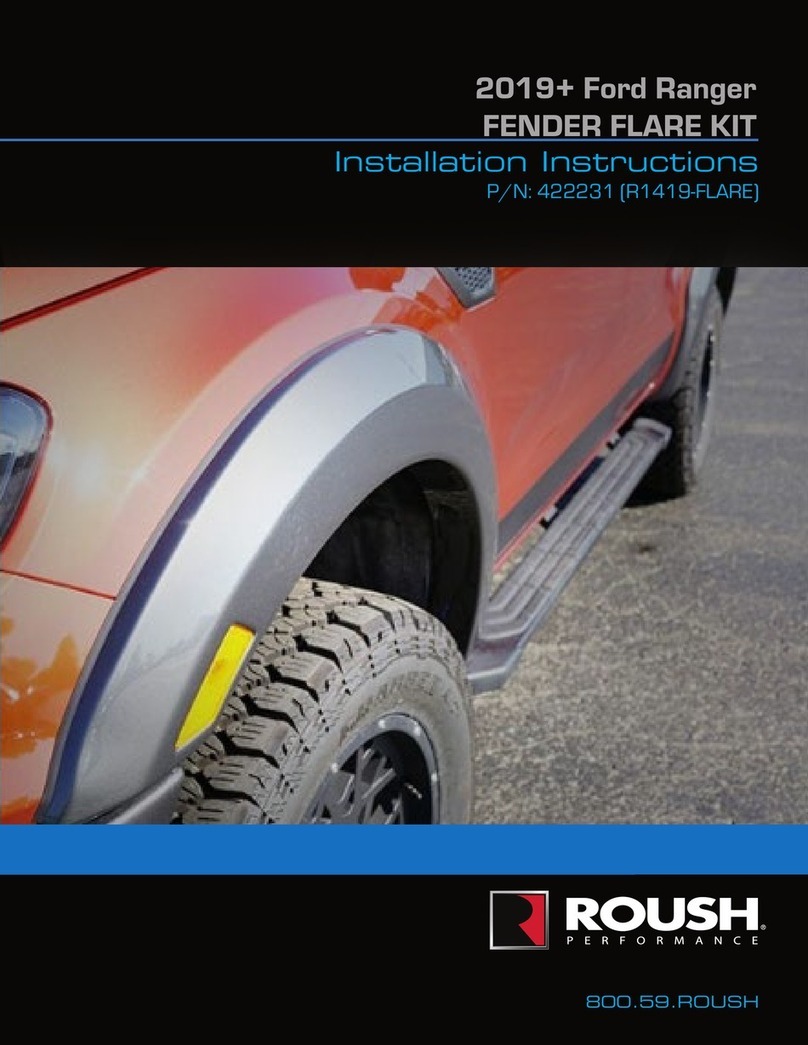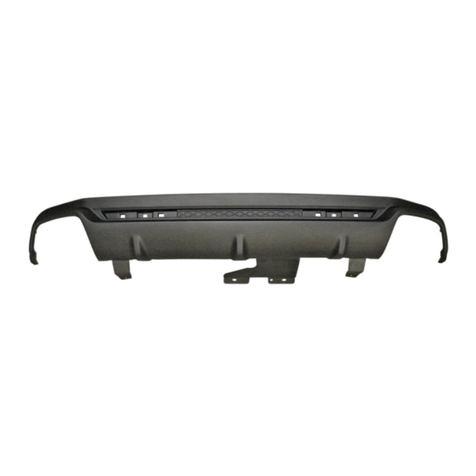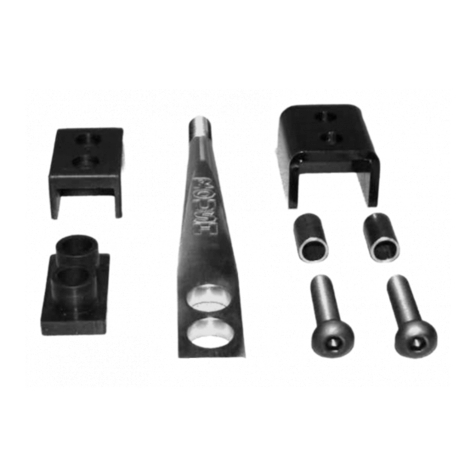
ROUSH® CleanTech F-150 Liquid Propane Injection
Service Manual Supplement
COMPONENT LOCATOR....................................................................................15
Engine Compartment ......................................................................................15
Fuel Rails and Injectors................................................................................................. 15
Chassis .............................................................................................................16
Fuel Lines and Tanks..................................................................................................... 16
TROUBLESHOOTING .........................................................................................17
Symptom Tables..............................................................................................17
Fuel Odor......................................................................................................................... 17
Diagnostic Flow Charts...................................................................................18
No Fill Condition............................................................................................................. 18
Slow Fill Condition......................................................................................................... 24
No Start Condition.......................................................................................................... 26
Fuel Pump Diagnostics.................................................................................................. 27
Fuel Sending Unit Diagnostics...................................................................................... 33
Fuel Fill Table.................................................................................................................. 36
MAINTENANCE REQUIREMENTS.....................................................................37
Schedule...........................................................................................................37
Maintenance Procedures ................................................................................37
Intake Air Filter Inspection............................................................................................. 37
In-Line Fuel Filter Replacement .................................................................................... 38
REPAIR PROCEDURES......................................................................................39
Preparing Vehicle for Service.........................................................................39
Alert Messages............................................................................................................... 39
Changing Fuses.............................................................................................................. 40
Pressure Relief ............................................................................................................... 41
Purging............................................................................................................................ 41
Purging the Fuel Tank.................................................................................................... 41
Purging System Fuel Lines............................................................................................ 41
Manual Fuel Shutoff ....................................................................................................... 42
Opening Manual Shutoff Valve...................................................................................... 43
Removing Intake Airbox Cover ..................................................................................... 44
Removing Power Steering Fluid Reservoir.................................................................. 45
Installing Power Steering Fluid Reservoir.................................................................... 46
12/14/2010 iii






























